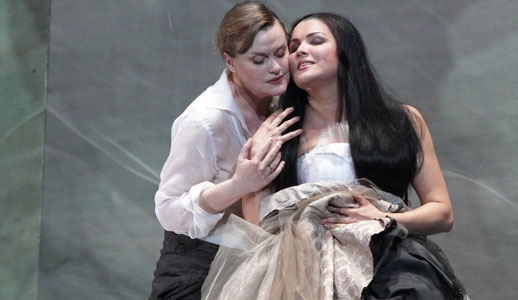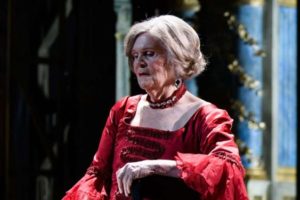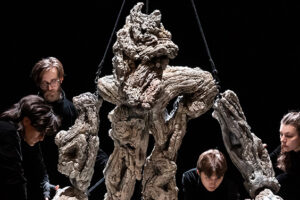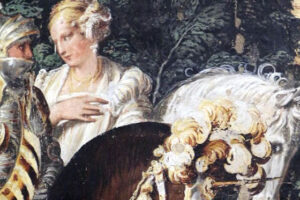

Dimitri Pittas, as Tebaldo, remained from the premiere cast (heard March 27, 2011) and made a warmer impression than 14 months ago, with focused sound, requisite agility, and good Italian, though the tone quality veered slim. The rest of the cast had changed, and so had ticket prices. Eight categories ranging from €11 to €163 at the premiere had jumped to a range of €20 to €264 for no readily accessible stated reason.
Vesselina Kasarova, who recorded Romeo back in 1997, sang with enough expressiveness to propel the story and engage the audience all by herself, as well as unexpected freshness. That said, hers is a lyric instrument with slightly diminished firmness. She acted fluidly and struck masculine poses.
Her own experience with Giulietta dating back at least to 2002, in Philadelphia, Anna Netrebko sounded relaxed and confident. The largest voice onstage, even next to Croat bass Ante Jerkunica’s resonant Capellio, she sang with dependable pitch but could not articulate a genuine trill.
Giulietta in this staging starts in (maybe) a broom closet. She climbs onto a washbasin, wall-mounted a meter off the floor. Then she stands on one foot on the washbasin’s edge and reaches upward toward a suspended and too-distant sculpture, depicting love (maybe), with her free leg outstretched for balance. She does this to Bellini’s andante maestoso and while negotiating the cantilena and declamation of “Eccomi in lieta vesta… Oh! quante volte, oh quante, ti chiedo.”
Last year the lithe and pretty soprano Eri Nakamura fumbled both Boussard’s balletic-gymnastic maneuver and Bellini’s ornate lines. Netrebko, 40, and no longer so dainty, managed it all. At least on Saturday. Bavarian taxpayers will be praying for four secure repeats (through May 26) and an insurance policy to cover any leading-lady bone fracture or, Gott behüte, a cracked washbasin.
Paul Gay, as Lorenzo, strode set designer Vincent Lemaire’s darkly raked platforms and endless open-bleacher scalinata with an insinuator’s poise, while stressing sweet lyrical compassion over basso depth. The many steps, not incidentally, gave view to the garish women’s costumes of once-fashionable Christian Lacroix, mismatched by period to those of his men.
Yves Abel drew cultured playing from the Staatsorchester, notably from the woodwinds. Unlike Fabio Luisi on the 2008 Garanca/Netrebko commercial recording of this opera, he never lost the pulse. Sören Eckhoff’s Bayerischer Staatsopernchor, habitually the weak link in performances here, acquitted itself with musical precision but opaque Italian.
At curtain time and at several points during the performance, Netrebko’s esteem for her Bulgarian co-star was evident. Careful gauging of vocal balances in the duets, and of protocol at the curtain, handed the night genially to 47-year-old Kasarova.
The May 19 performance of this run will be streamed at www.staatsoper.de at 7 pm, Central European Summer Time.
























Comments